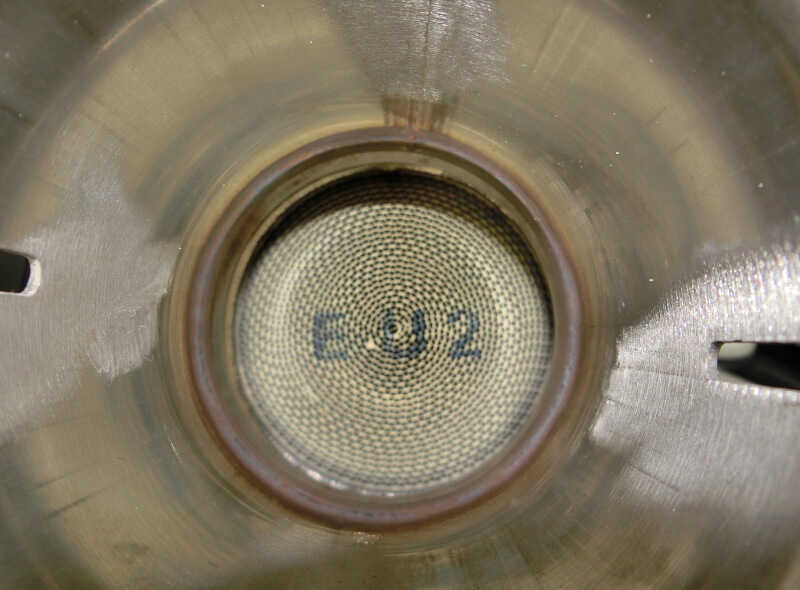Background:
This post continues an investigation of the flow performance produced by different Mk7 exhaust components. A previous post addressed a test of the stock GTI downpipe and USP Motorsport catted downpipe.
In this test the CTS Turbo Front Wheel Drive MQB 3.5″ Cast Downpipe is being flow tested using a flow bench and results are compared with previous downpipe flow test results.
Test Procedure:
The CTS Turbo downpipe includes a removable catalytic converter section and an optional reducer that transitions the downpipe from the 3″ CTS mid-pipe diameter to the stock exhaust mid-pipe.
Note: The CTS downpipe is 3.5″ at the turbo outlet and through the first 180 degree turn, prior to the flex joint it transitions to a 3″ pipe.
Multiple configuration options are available and several of these are tested including, 1) downpipe without the catalytic converter and reducer, 2) downpipe with catalytic converter and without reducer, 3) downpipe without catalytic converter and with reducer, 4) downpipe with catalytic converter and reducer.
The downpipe is attached to the flow bench using a silicone coupler and an adapter that enlarges as air flows into the flowbench upper chamber. At the inlet to the downpipe a bell-mouth adapter is attached to smooth the flow of air into the downpipe. Air is drawn into the downpipe in the direction that air flows on the vehicle.
The flow bench is operated at a test depression of 16″ of H2O and at this pressure differential the airflow through the downpipe is recorded.
Note: Testing at 16″ of H2O is a change from the typical depression that I have conducted tests at. Most often tests are conducted using a depression of 28″ of H2O. The reason for the change is the high flow amounts that a catless downpipe can support. For some products it won’t be possible to achieve 28″ of H2O before reaching the flow bench maximum airflow of approximately 600 CFM. The would force a test depression less than 28″ of H2O. To try and standardize the test depression early in the testing process another commonly used test depression is selected, in this case 16″ of H2O. Because relative performance is the measure of interest the change to the test depression does not change the conclusions.
Test Results:
Airflow measurements with the various parts combinations of the CTS Turbo downpipe are:
- Downpipe without cat and reducer: 518 CFM
- Downpipe without cat and with reducer: 461 CFM
- Downpipe with cat and without reducer: 363 CFM
- Downpipe with cat and reducer: 338 CFM
These results are shown on the following chart and compared with previously tested downpipes:
Conclusions:
The CTS Turbo downpipe with reducer and catalytic converter performs similar to the USP downpipe similarly configured. Both of these downpipe significantly outperform the stock GTI downpipe, flowing twice the air at the 16″ test depression.
Both the reducer and catalytic converter lead to a decrease in airflow in comparison to a straight pipe configuration. The catalytic converter reduces airflow more than the pipe reducer/coupler, 155 CFM by the catalytic converter and 57 CFM by the reducer. This is not a surprising outcome when you look at what the catalytic converter presents to the air flow.




Thank you for all of your hard work!!
Thanks for taking the time to give the feedback!
Looking forward to see other downpipes! Thanks for doing these tests!
Thanks Man… you’re a light in this dark path..since I found your blog, it become to a reference before to do something in my GTI, example, I changed my Neuspeed IC for a “Majesty” Twintercooler (+ stock IC), with this setup I recovered 10psi @3000rpm on my Snail Turbo, also I mainteined low temp (30-35 degrees) at hard pulls, so it works perfectly like you said, Thanks again for all your hard work..!
Now I need change my DP for a bigger one 3.5″ so I’ll be waiting for yur research to select the correct one
Thanks for the feedback! I’m glad the information has been helpful.